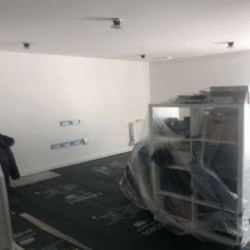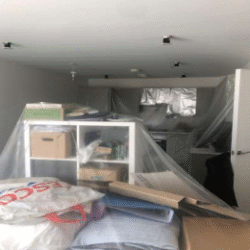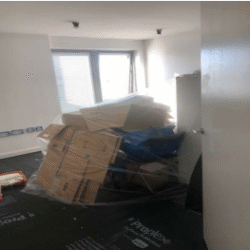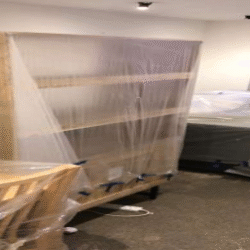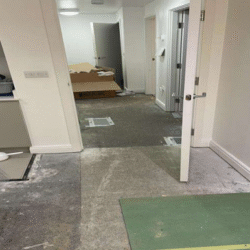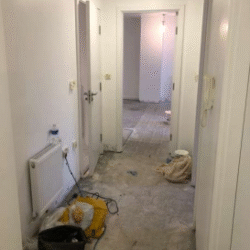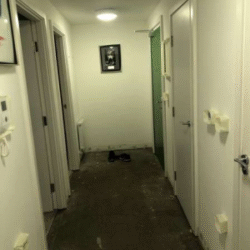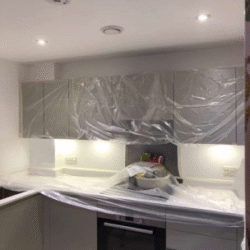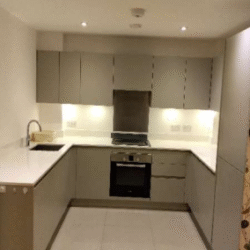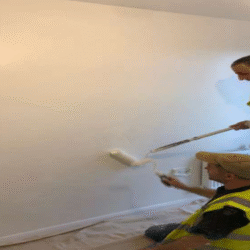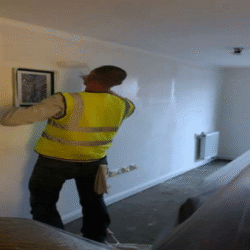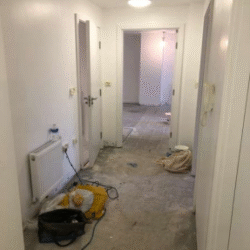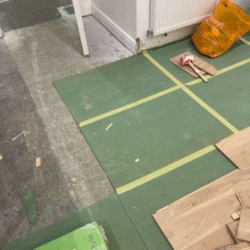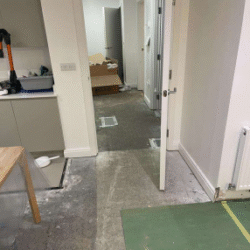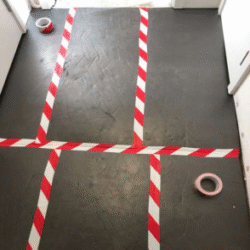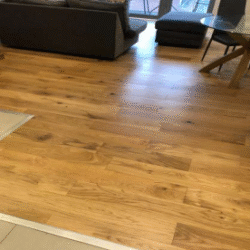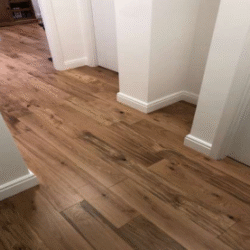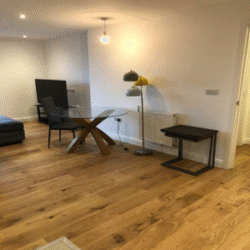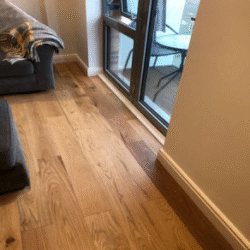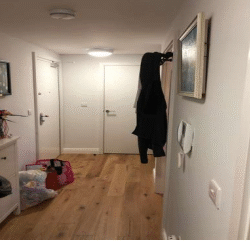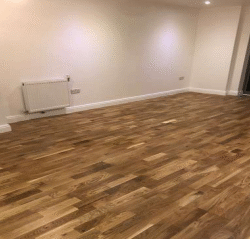Comprehensive Residential Renovation
Project Details
-
Location
Franklin Court, London WD6 5FN -
Client
Archers -
Project Manager
Conner Murphy -
Site Supervisor
Pawel Zewczuk -
H&S Consultant
Lee Burker -
Delivery Programme Period
83 Days -
Contract Value
£220 000 -
Project Number
PRO-4963
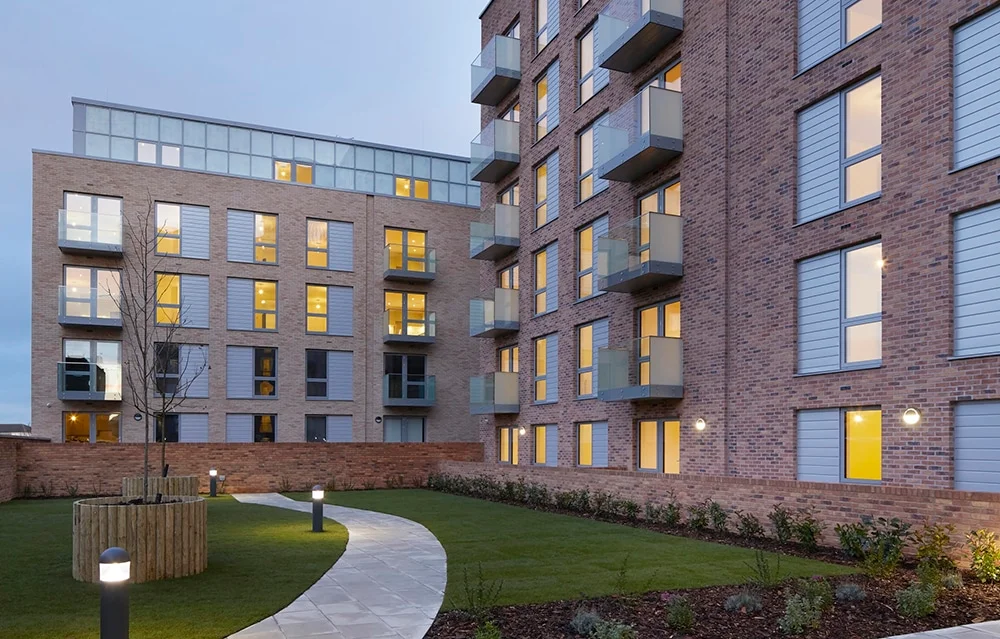
Client Feedback
“The owners of all apartments in this residential high-rise building decided to renovate their several rooms.”
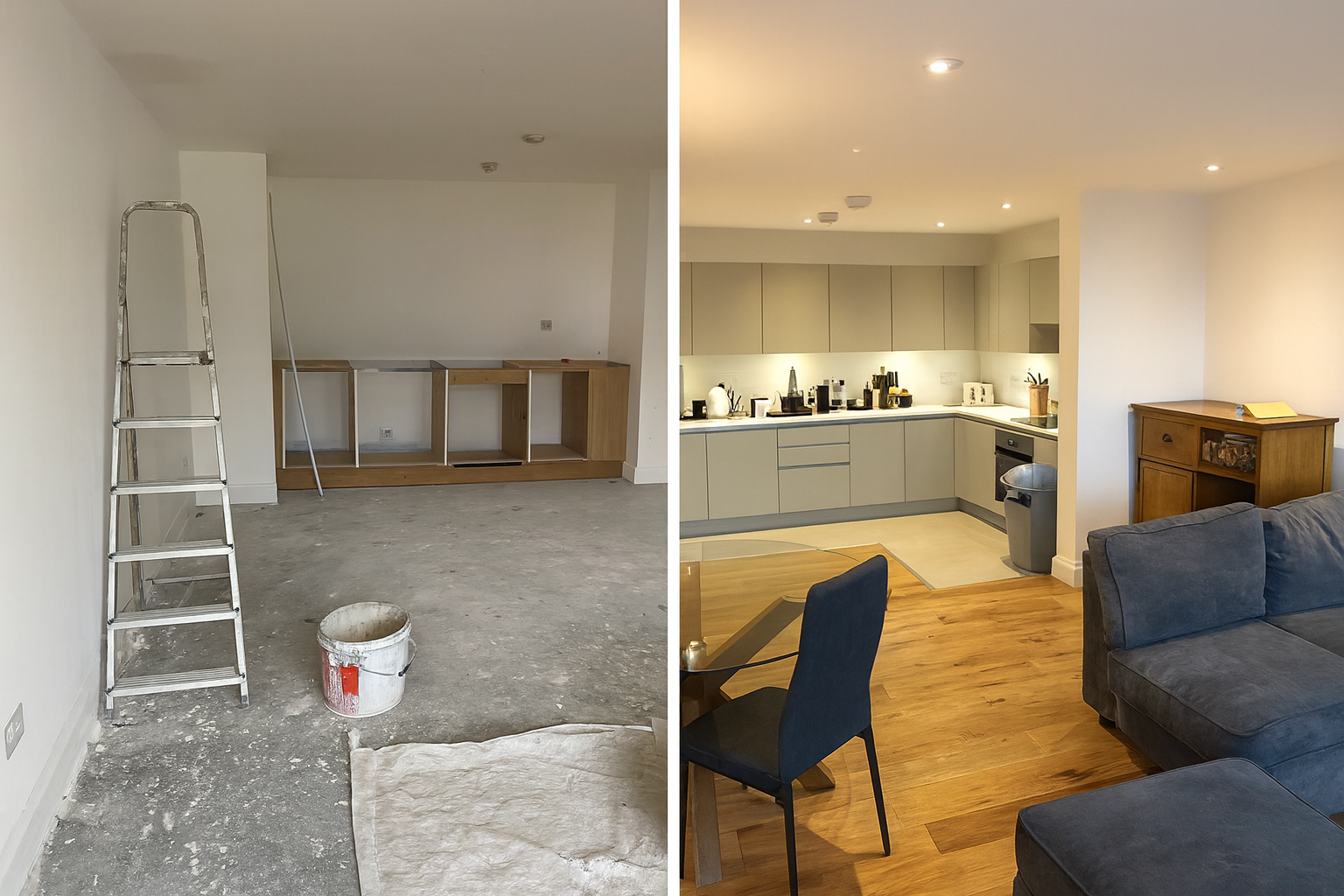 IN PROGRESSAFTER
IN PROGRESSAFTER
Project Overview
The Challenge:
Following winning the tender for the full renovation of private apartments and building communal areas at Franklin Сourt at the heart of London, we presented the work schedule, method statements and CPP to our customer for approval.
The project included partial replacement of the apartment blocks’ roofs, replacement of the rainwater guttering, renovation of the corridors, staircases, and landings of the entire communal areas (i.e., complete communal area rewiring, installation of new LED lighting throughout the communal areas, and installation of the fire alarm systems). In addition, the project included a full renovation of all apartments in the Frankin Court buildings, including the installation of new kitchens, bathrooms, engineered wooden flooring, and full decoration throughout.
Also, as it emerged at a later stage, the building’s commercial sewers, drains and waste pipework had to be replaced.
The project phases relating to the renovation of apartments and corridors with the modernization of lighting were planned according to a clearly defined schedule, which was followed by agreeing on the list of works with the homeowners of each apartment in those multi-story buildings. The British Builders team had no concerns regarding the organising and planning of the above-mentioned projects, as we have sufficient experience with the execution of similar past projects.
However, during the roof survey, it was discovered there were problems with the roof storm drain systems. Furthermore, according to our roofer’s report, several downpipes were heavily blocked by vegetation mixed with gravel that had entered the gutters after heavy rains. In addition, they discovered damaged waterproofing and thermal insulation on the roof in the place where the flooring is made of concrete slabs. The renovation of the roof was required according to the type of inverted warm roof supplied by Bauder. We would have to consult with the Bauder merchant supplier to purchase all the necessary materials to ensure the quality of work according to specifications.
The Solution:
We began work on the roof by repairing/replacing the roof’s concrete slab area, supplying and Installing new Bitumen membrane insulated outlets, and damp-proof work on the roof. All work was carried out according to Bauder’s Specifications. Additionally, we replaced the roof’s guttering and downpipes.
After confirming that the roof is watertight, we began full communal area rewiring, replacing the LED lighting, emergency lighting, fire and smoke alarm systems, and installing H&S signage and posters as needed.
In accordance with the approved work schedule, inventory of works, and budget, we began the restoration of the apartments. New kitchens and bathrooms were supplied and fitted, and interior decoration and installation of engineered wood flooring in each apartment have been completed successfully. Two of our teams took turns working on this project segment to expedite the process.
Following this, our carpenters have laid down commercial heavy-duty vinyl flooring across all communal areas and landings.
The Completion:
British Builders team has completed this project under budget and 2 weeks sooner than planned thanks to careful planning, proper project management, experienced builders and the collaborative efforts of everyone involved.
Useful information: Inverted roof (upside down roof).
In an inverted roof construction, the principal thermal insulation layer is located not only above the roof structure but also above the waterproofing, resulting in the waterproofing, structural deck and support structure being at a temperature close to that of the interior of the building. No vapour control layer is required.
This type of flat roof is widely used on civic buildings, hotels, apartment blocks and hospitals. It is ideally suited to roofs which are heavily trafficked, such as car park decks, patios and roof gardens. The thermal insulation should have high resistance to water absorption, be dense enough to support the loads imposed upon it and have overlapping or interlocking joints to minimize thermal bridging.
To regulate the movement of water and protect against dirt and grit penetrating the joints between insulation boards, a water flow-reducing layer (WFRL) should be placed on the insulation layer; to assist the flow of water to drainage outlets.
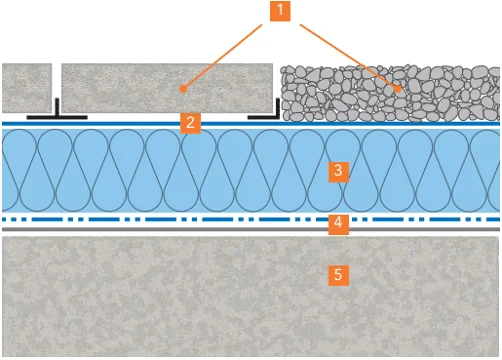
- Surfacing / Ballast (e.g. paving or pebbles)
- Water Flow Reducing Layer
- Inverted Roof Insulation Boards (e.g. extruded or expanded polystyrene)
- Waterproofing System
- Structural Deck (e.g. concrete)
What Our Clients Say on Trustpilot
Read verified reviews from landlords, agencies, and homeowners who trust us for quality maintenance and construction services.



